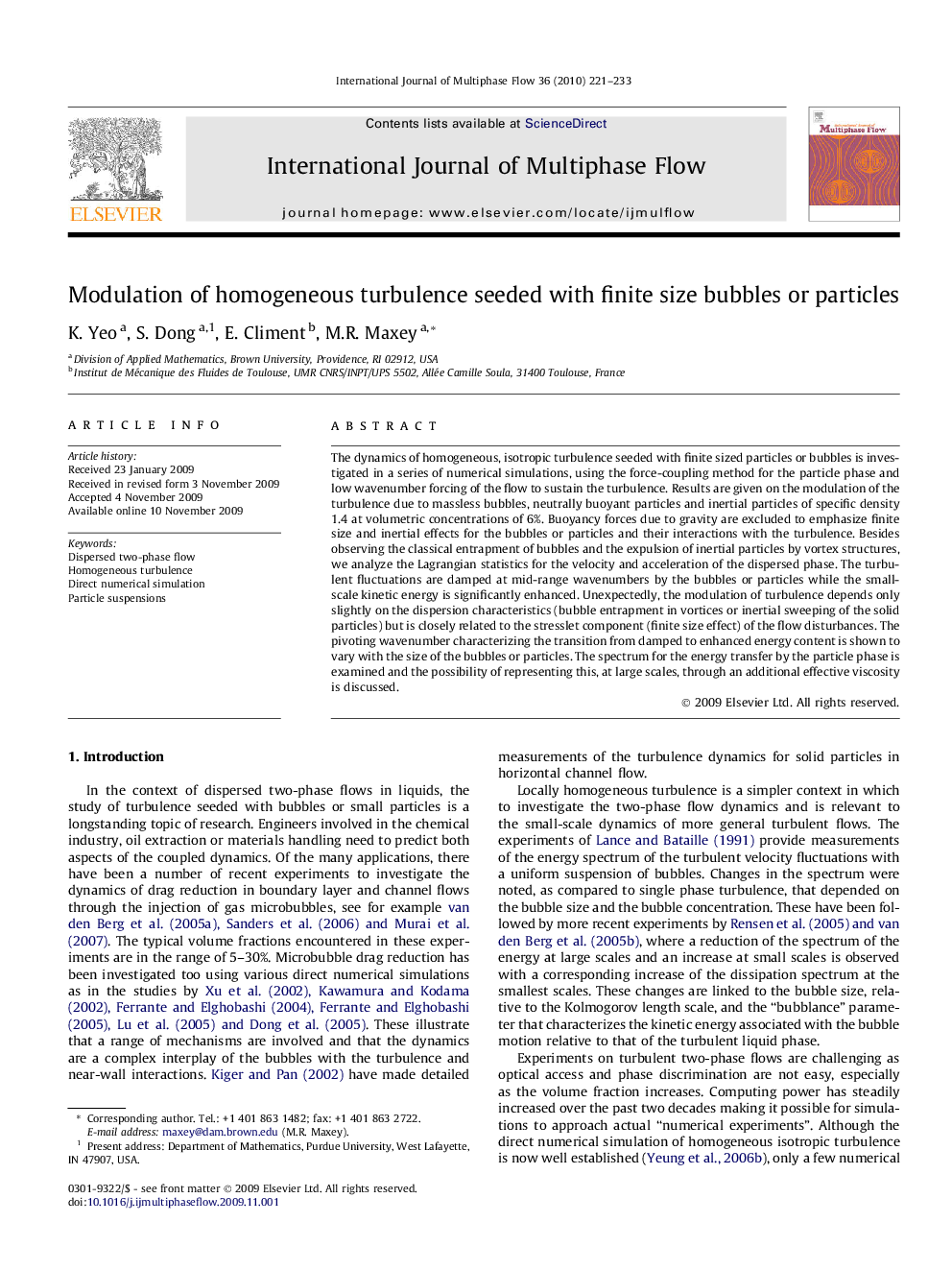| Article ID | Journal | Published Year | Pages | File Type |
|---|---|---|---|---|
| 666903 | International Journal of Multiphase Flow | 2010 | 13 Pages |
The dynamics of homogeneous, isotropic turbulence seeded with finite sized particles or bubbles is investigated in a series of numerical simulations, using the force-coupling method for the particle phase and low wavenumber forcing of the flow to sustain the turbulence. Results are given on the modulation of the turbulence due to massless bubbles, neutrally buoyant particles and inertial particles of specific density 1.4 at volumetric concentrations of 6%. Buoyancy forces due to gravity are excluded to emphasize finite size and inertial effects for the bubbles or particles and their interactions with the turbulence. Besides observing the classical entrapment of bubbles and the expulsion of inertial particles by vortex structures, we analyze the Lagrangian statistics for the velocity and acceleration of the dispersed phase. The turbulent fluctuations are damped at mid-range wavenumbers by the bubbles or particles while the small-scale kinetic energy is significantly enhanced. Unexpectedly, the modulation of turbulence depends only slightly on the dispersion characteristics (bubble entrapment in vortices or inertial sweeping of the solid particles) but is closely related to the stresslet component (finite size effect) of the flow disturbances. The pivoting wavenumber characterizing the transition from damped to enhanced energy content is shown to vary with the size of the bubbles or particles. The spectrum for the energy transfer by the particle phase is examined and the possibility of representing this, at large scales, through an additional effective viscosity is discussed.
